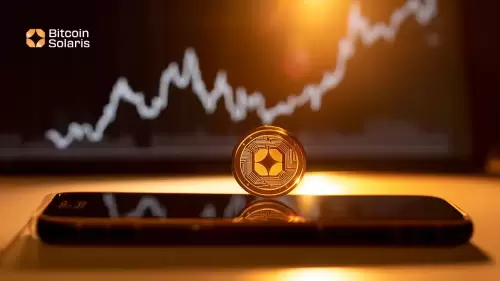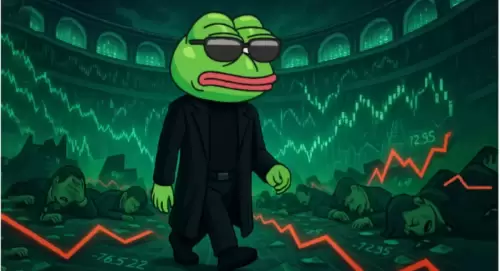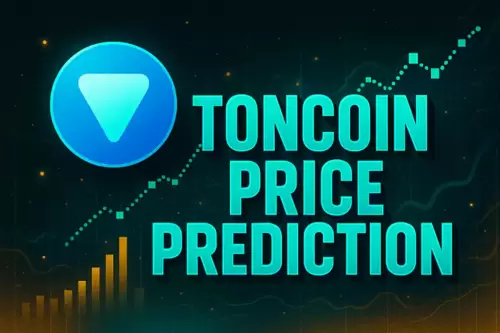 |
|
 |
|
 |
|
 |
|
 |
|
 |
|
 |
|
 |
|
 |
|
 |
|
 |
|
 |
|
 |
|
 |
|
 |
|
Cryptocurrency News Articles
Bitcoin Halving and Runes: Shaping the Fate of Ordinals and BRC-20s
Apr 19, 2024 at 06:25 pm
Despite the upcoming Bitcoin halving and introduction of the Runes token protocol, Ordinal inscriptions and BRC-20 tokens will remain unaffected. Ordinals has experienced a surge in demand, surpassing Ethereum, with Ordinal collections promising Runes token drops seeing increased interest. The Runes protocol, developed by Ordinals inventor Casey Rodarmor, may impact Bitcoin economics, potentially increasing costs for Ordinal inscriptions and boosting demand for existing collections. However, some believe that high fees could limit mass adoption of Bitcoin-based tokens, suggesting a shift toward exclusive, high-end assets on the Bitcoin network.

Bitcoin's Halving and the Dawn of Runes: Implications for the Ordinals and BRC-20 Ecosystem
As the impending Bitcoin halving draws near, alongside the launch of the revolutionary Runes fungible token standard, collectors and enthusiasts in the Bitcoin ecosystem are grappling with a series of questions:
Firstly, what impact will these developments have on the increasingly popular Ordinals inscriptions on the Bitcoin blockchain? Secondly, how will the emergence of BRC-20 fungible tokens built upon the Ordinals protocol affect the dynamics of this rapidly evolving landscape?
The Halving and the Fate of On-Chain Assets
Unlike the Ethereum "merge" transition witnessed in late 2022, the upcoming Bitcoin halving does not pose any concerns for the well-being of on-chain Bitcoin assets. The halving refers solely to the quadrennial reduction in mining rewards, a measure designed to slow the influx of new BTC into circulation. Historically, this event has often triggered an upward surge in Bitcoin's price.
Therefore, the Bitcoin network will continue to produce blocks as usual, ensuring that both Ordinals inscriptions and BRC-20 tokens remain safely stored within user wallets. No specific actions are required to safeguard these assets.
Demand and the Future of Bitcoin-Related Assets
A more pressing question revolves around the demand for Bitcoin-related assets and the potential impact of the Runes protocol's launch on the popularity of BRC-20 tokens.
Ordinals have experienced an unprecedented surge in demand in recent months, eclipsing long-standing NFT leader Ethereum in terms of trading volume. This shift has propelled cross-chain marketplace Magic Eden to the forefront, while Ordinals collections promising upcoming Runes token drops have witnessed a significant spike in value. Examples include the Runestone collection.
Anticipating the release of Runes, DappRadar's Senior Communications Manager Robert Hoogendoorn speculates that Ordinals and other Bitcoin-based assets may benefit from projected long-term increases in BTC's price. "Just as the halving is likely to increase the price and, therefore, demand for BTC in the long run," he observes, "I also expect demand for Bitcoin assets, like Ordinals, to increase."
The Rise and Fall of BRC-20 Tokens
In contrast to the bullish sentiment surrounding Ordinals, BRC-20 tokens have experienced a cooling of demand. Notable examples like ORDI and SATS have suffered substantial losses in value, significantly outpacing the decline in Bitcoin's price and eclipsing the losses incurred by many other cryptocurrencies.
Runes: A New Era of Bitcoin Assets
The Runes protocol not only promises a more efficient implementation of Bitcoin-based tokens but also boasts an additional advantage: its development by Casey Rodarmor, the innovator behind the Ordinals protocol. While BRC-20 was an experimental token standard built upon his protocol, Runes carries Rodarmor's imprimatur, which holds significant sway among collectors and investors.
"It's his vision of how he's seeing this come together," explains Elizabeth Olson, head of growth at Bitcoin wallet startup Xverse. "Obviously, Ordinals have been a huge success, so I would imagine that Runes will be just as big, if not bigger, than BRC-20 tokens."
Runes and the Future of the Bitcoin Network
However, the advent of Runes could potentially reshape Bitcoin's economic landscape and introduce new assets to the network, with implications that could be either positive or negative depending on one's perspective.
The anticipated launch of Runes has generated immense anticipation, with various projects vying to be among the first to mint tokens on the platform. This heightened demand is likely to drive up the cost of using the network for some time to come.
"The release of the Runes protocol at the halving will lead to a period of sustained high fees on Bitcoin," remarks Leonidas, a pseudonymous NFT historian and co-creator of the Runestone project. "This will affect the Ordinals protocol in several ways. Because it will be more expensive to inscribe files on-chain, artists will have to become more clever about how they use file space."
Scarcity and Value
This increase in transaction costs could result in a reduction in the number of new Ordinals projects deployed on Bitcoin, while simultaneously driving up the prices of existing collections. "The increased cost associated with dropping a collection will also induce scarcity amongst the existing collections," Leonidas adds. "Existing collections will not need to compete as much for mindshare with new mints—because there just won't be as many."
Moreover, the Runes protocol leverages Ordinals to "associate a visual component to every Rune that is etched," providing an additional use case for Ordinals.
Xverse founder and CEO Ken Liao echoes the sentiment that increased fees will impact the Ordinals space, making it "harder and more expensive to create new ones." He also concurs that the broader demand for Bitcoin assets, fueled by the scarcity created by the halving, will have a discernible impact on Ordinals.
The Flip Side: Exclusion and Accessibility
Of course, the potential increase in fees and asset prices also carries a downside: as everything becomes more expensive, Bitcoin assets could become increasingly exclusive.
While this may be seen as advantageous by holders of such assets, it could limit the number of individuals who can afford to participate in this space. However, numerous other blockchains offer significantly lower transaction costs, and Bitcoin layer-2 scaling networks are also emerging.
Speculation and Mass Adoption
"I highly suspect speculators will enjoy the new Runes playground for a while, at the expense of the BRC-20 movement," observes Randy Wasinger, founder and CEO of CryptoSlam. "Ordinals is great for niche, high-end assets that can benefit from the prestige of Bitcoin. But otherwise, I just don't see any Bitcoin-based application achieving sustained mass adoption."
Wasinger contends that tokens require movement to thrive and that Bitcoin's high transaction fees will ultimately stifle volume and momentum, regardless of the underlying protocol.
In conclusion, the upcoming Bitcoin halving and the launch of the Runes protocol present a complex and multifaceted set of implications for the Ordinals and BRC-20 ecosystems. While the future remains uncertain, one thing is clear: this rapidly evolving landscape will undoubtedly continue to captivate the attention of collectors, investors, and industry observers alike.
Disclaimer:info@kdj.com
The information provided is not trading advice. kdj.com does not assume any responsibility for any investments made based on the information provided in this article. Cryptocurrencies are highly volatile and it is highly recommended that you invest with caution after thorough research!
If you believe that the content used on this website infringes your copyright, please contact us immediately (info@kdj.com) and we will delete it promptly.





























































